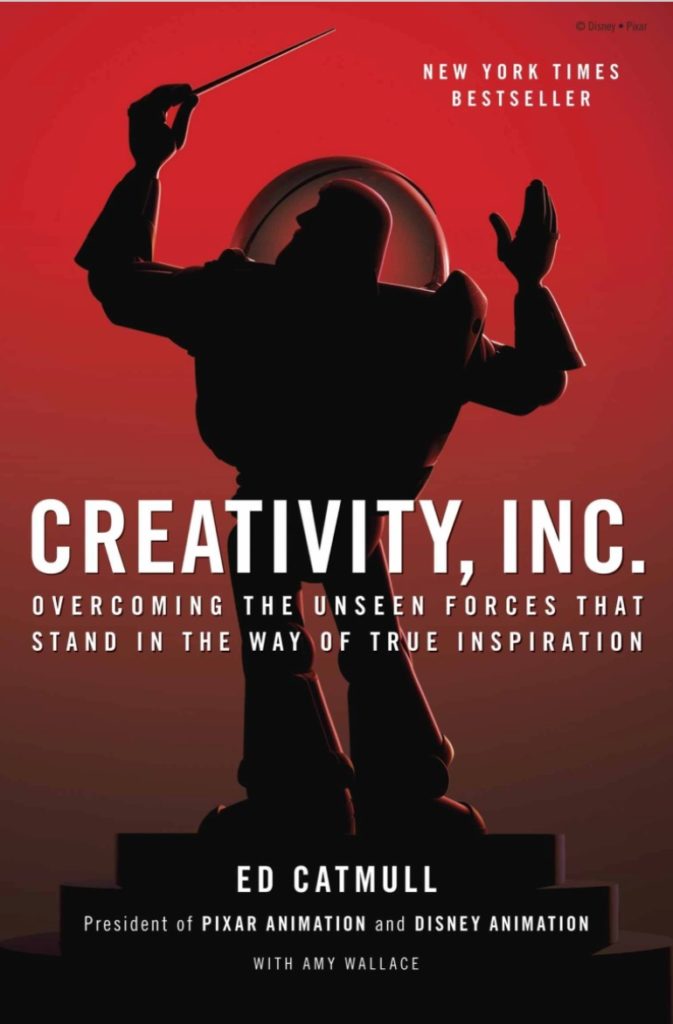Creativity Inc. is a delightful & fairly easy read. I enjoyed it, however didn’t get much practical value out of it.

Rating
(Higher is better, 5 is neutral)
- Would I recommend? 5 / 10
- Did I learn anything? 5 / 10
- Did I learn anything I can apply? 2 / 10
- High information density? 3 / 10
- Would I re-read? 3 / 10
Buy Creativity Inc. on Amazon
Creativity Inc Overview
Gems of information are tucked away amongst history around Pixar. You’ll have to sift through stories about Toy Story, Bugs Life, and other films along the way of finding ideas to ponder.
Reading this book you’ll learn more about Pixar’s history than what makes thriving creative workplace. Though
Who should read Creativity Inc?
If you love Pixar, I highly recommend Creativity Inc! You’ll have much deeper love and appreciation for everything they create.
However, I likely won’t be recommending to anyone for personal growth or learning. I may recommend it to Managers & Directors who are scaling a company up. It could be encouraging read to reflect on what team culture to defend and keep as well as how to adapt as an organization grows. Though this book doesn’t dive into concrete advise.
My main takeaways from Creativity Inc.
Creativity is fragile. Do not shut ideas down, give them safety and build upon them.
Self expression is important, allow folks to decorate their workplace and share their passions they have outside of work.
A select group of employees will “get it” and be rockstars, value them. However, I’m not sure if I agree with Pixar’s “Braintrust”. While open radical candor is very important, I feel it places a select few into an elite few. It doesn’t seem this is Pixar’s intent with the Braintrust since advise (“notes”) are optional. I think I’d rather a pattern when all can provide radical candor regardless of status. Creating a Braintrust creates an inner circle club.
If you liked this book, next I’d recommend:
Going deeper on team culture: Debugging Teams
Going deeper on leading with positive impact: Multipliers
Favorite Quotes
“[…] managers must loosen the controls, not tighten them. They must accept risk; they must trust the people they work with and strive to clear the path for them; and always, they must pay attention to and engage with anything that creates fear.”
“For all the care you put into artistry, visual polish frequently doesn’t matter if you aren’t getting the story right.”
“Finding and fixing problems should be assigned to every employee. […] ownership of and responsibility for a product’s quality to the people where most involved in its creation. […] You don’t have to ask permission to take responsibility.”
“If you give a good idea to a mediocre team, they will screw it up. If you give a mediocre idea to a brilliant team, they will either fix it or throw it away and come up with something better.”
“Find, develop, and support good people, and they in turn will find, develop and own good ideas.”
“You are not your idea, and if you identify too closely with your ideas, you will take offense when they are challenged. To set up a healthy feedback system, you must remove power dynamics from the equation – you must enable yourself, in other words, to focus on the problem, not the person.”
“Candor is only valuable if the person on the receiving end is open to it and willing“
“Failure, when approached properly, can be an opportunity for growth. […] To be wrong as fast as you can is to sign up for aggressive, rapid learning.”
“If we allow more people to solve problems without permission, and if we tolerate (and don’t vilify) their mistakes, then we enable a much larger set of problems to be addressed.”
“Managers, afraid of appearing to not be in control, believe that they have to know everything – or at least act like they do. […] The better approach, I believe, is to accept that we can’t understand every facet of a complex environment and to focus, instead, on techniques to deal with combining different viewpoints.”
